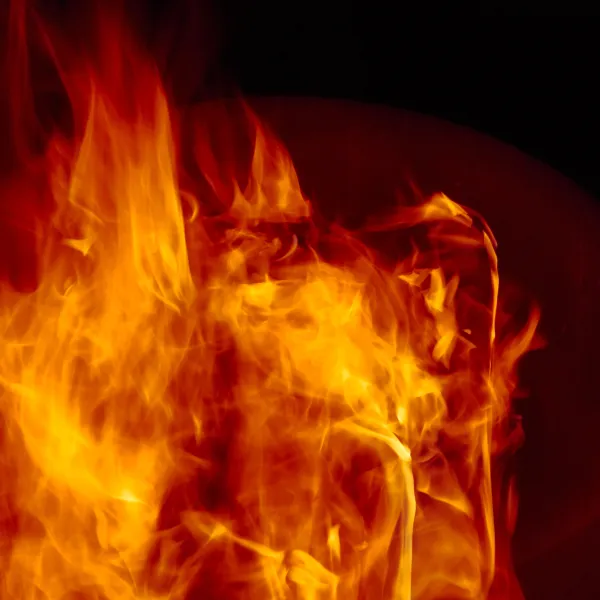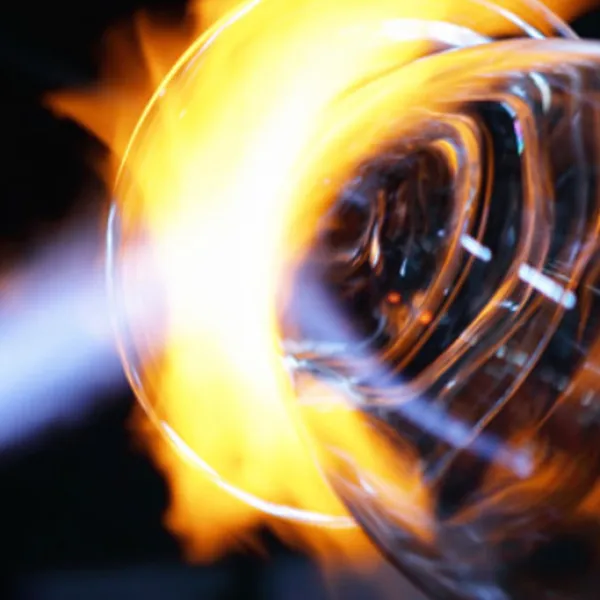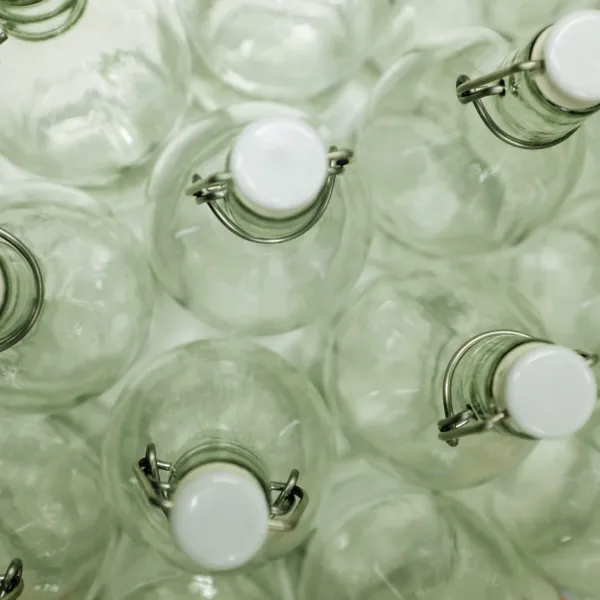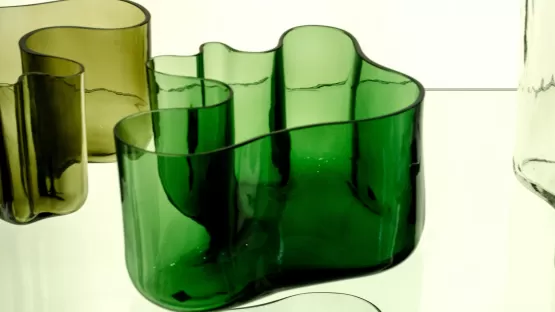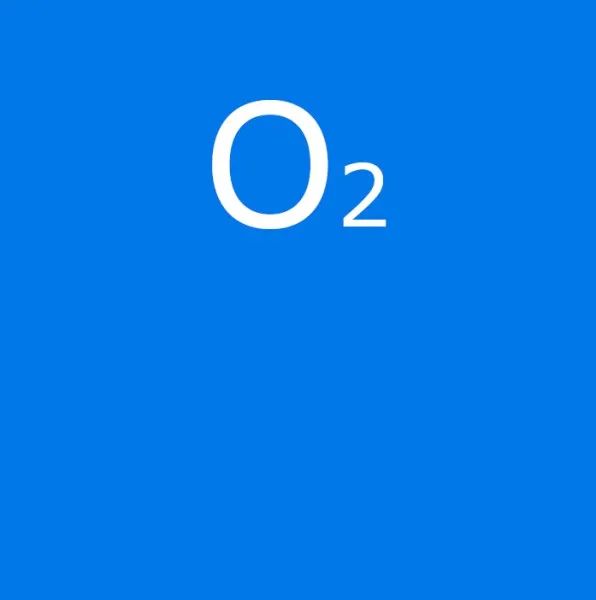A wide range of solutions for the glass industry

Personalised support and expertise
Air Liquide collaborates with its customers from the feasibility study phase to the commissioning of the facilities and then supports them during the operating phase.
Air Liquide's technologies are suitable for all segments of the glass industry, benefit from several decades of experience feedback in diversified industrial contexts.
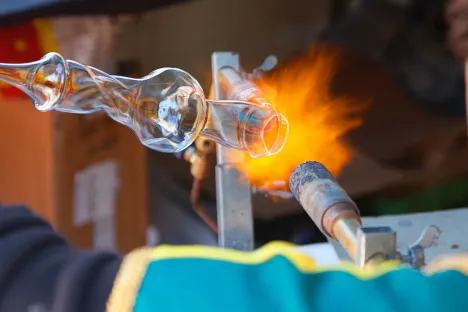
Innovation and network of specialists
To meet technological challenges, Air Liquide has developed a set of technical solutions (burners, control and regulation, heat exchangers, simulation software) and supports its customers from the feasibility study phases to the commissioning of installations and also throughout the operation of the production units. These technologies are implemented in a large number of furnaces in all segments of the glass industry (flat glass, container glass, table glass, technical glass, fibres).
Air Liquide maintains the mobilization of teams specialized in Research, development and industrial applications in the field of high-temperature combustion and files new patents every year.
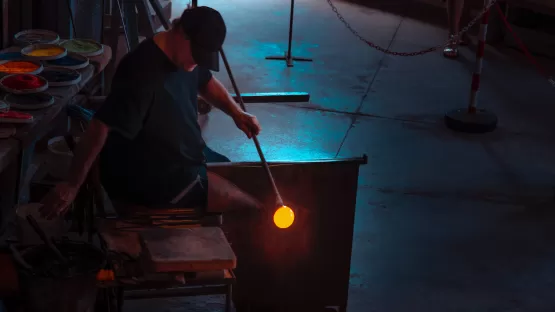
Our solution for glass melting
The melting of glass requires reaching extremely high temperatures, often over 1,400°C.
The use of oxygen instead of preheated air makes it possible to obtain very hot flames with a high radiative transfer power, energy efficiency is improved, nitrogen oxide emissions are drastically reduced (factor 10) and the volume of fumes to be treated is much lower.
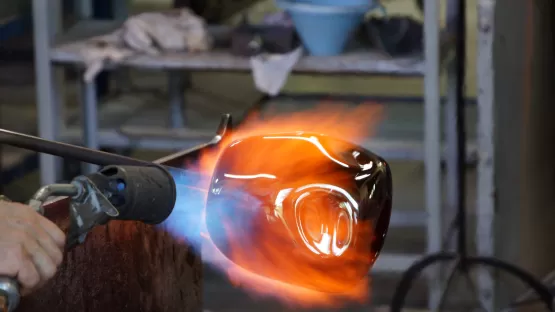
Glass distribution
Downstream glass processing and finishing operations use technologies that use industrial gases.
Air Liquide offers solutions dedicated to these different stages, combining the supply of gases, implementation equipment on the customer's line and business expertise...
Flat glass "Float glass"

Float glass technology is the universal flat glass production technology.
I this technology, the glass is solidified on a bath of tin kept molten and protected by a reducing atmosphere consisting of a nitrogen/hydrogen mixture.
- Reliable technologies
- Industrial tool for the production of nitrogen and hydrogen
- Meets very high criteria in terms of continuity of supply
Reburning and polishing of surfaces
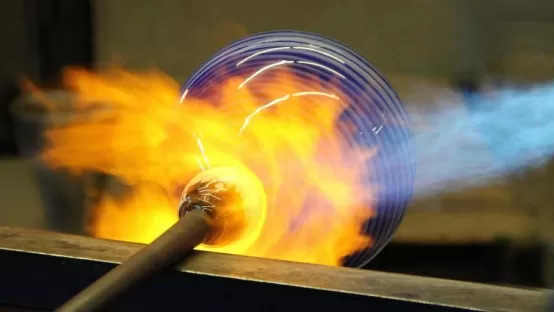
After forming, the marks left on the articles by the forming molds must be removed. This is obtained by the local remelting of the glass by means of oxy-gas burners which will have to be regulated with precision to bring the necessary level of energy and to the right place.
For very high quality items (perfume bottles, high-end small and medium series bottles, etc.), it is the entire visible surface that we will seek to remelt very superficially to produce this smooth surface effect and bright. This will be obtained by using Oxygen/hydrogen burners whose flame is particularly suited to the desired effect.
Oxygen feeders
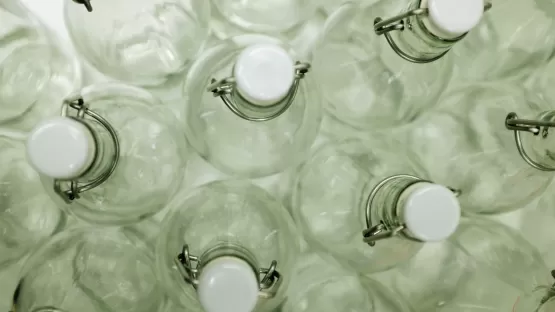
Once produced in the melting furnace, the glass is transported to the forming machines by distribution channels commly called "feeders". The molten glass is maintained at temperature by burners supplied with gas and air at ambient temperature.
These distribution channels represent an often considerable energy consumption. The use of oxygen instead of air for maintaining the temperature of these channels makes it possible to achieve substantial energy savings and also provides very operational flexibility in the management of the temperature of these feeders.
The benefits can be considerable in terms of the flexibility of the production tool. Air Liquide has developed specific burners for this application of oxycombustion to feeders.
Mold lubrication

The lubrication of glass molds, for carousels or machines of the IS type, commonly called "coating", can be advantageously obtained by depositing a film of carbon produced by thermal decomposition of a hydrocarbon.
A solution adapted to your specific needs
Air Liquide offers equipment for bringing and breaking down the hydrocarbon as close as possible to the surface to be lubricated, as well as the hydrocarbons (acetylene, propylene, etc.) capable of generating this carbon deposit.
- Automated lubrication
- Excellent surface quality to glassware
- Preserves the quality of the atmosphere at the workplace
- Reduces the risks and laboriousness of manual grease lubrication operation
Do you have any questions about our solutions for the glass industry?
Please fill in our contact form below and we'll come back to you as soon as possible

